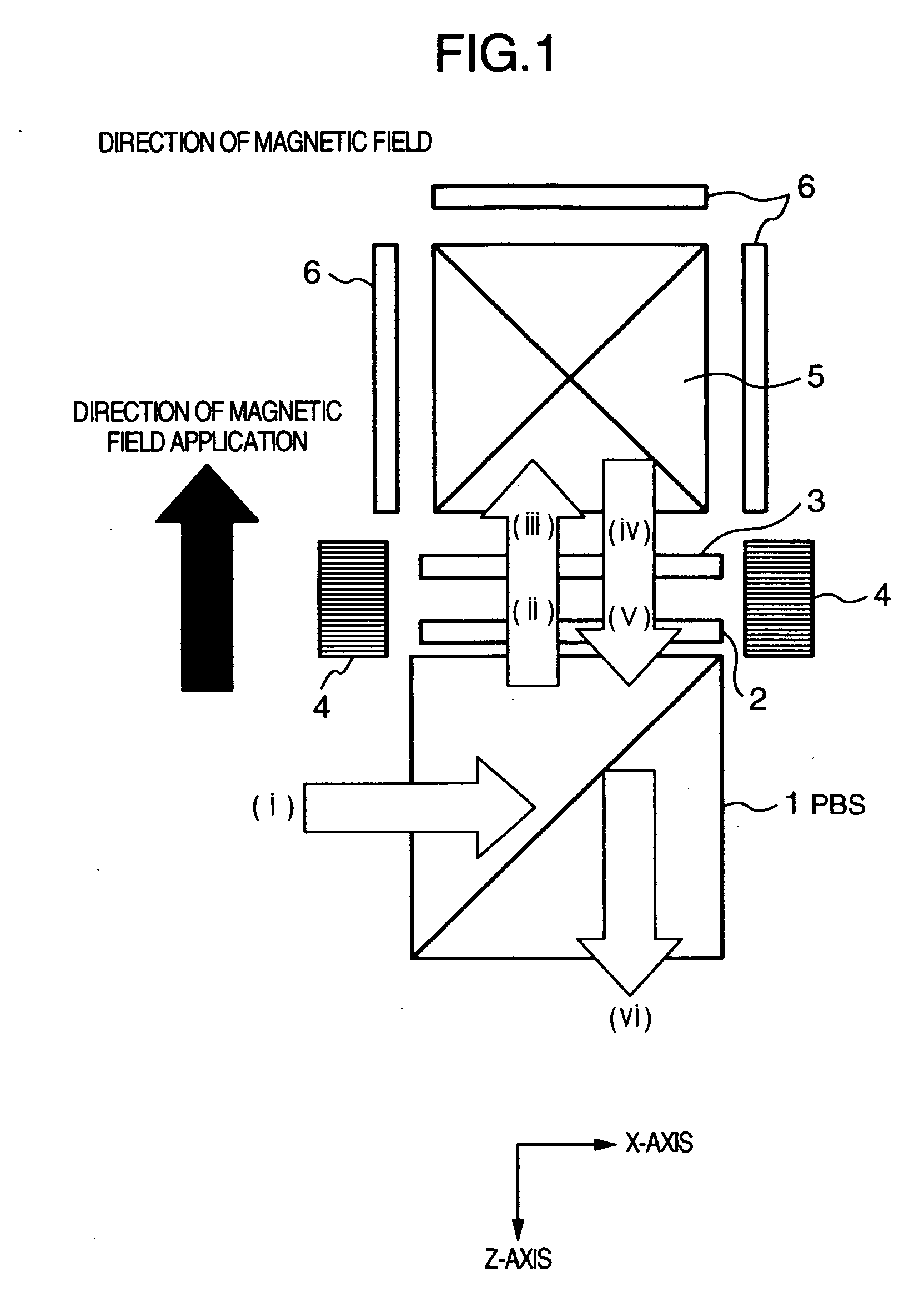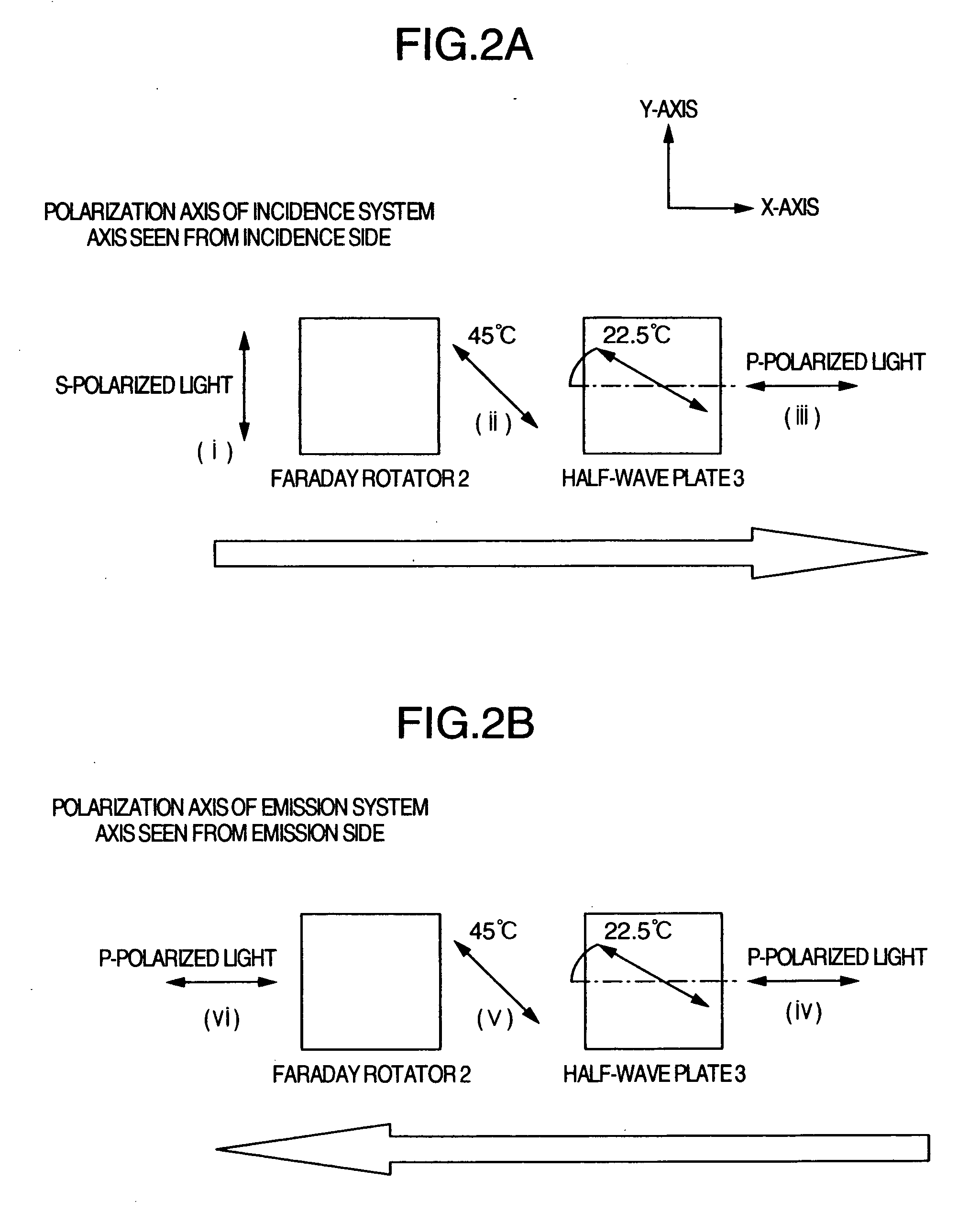Optical unit and projection type projector apparatus using the same
a projection device and optical unit technology, applied in the field of projection device and projection type projector apparatus, can solve the problems of inability to obtain fine spectral transmission factor performance, disadvantageous size, weight and cost scheme, etc., and achieve the effect of low cos
- Summary
- Abstract
- Description
- Claims
- Application Information
AI Technical Summary
Benefits of technology
Problems solved by technology
Method used
Image
Examples
first embodiment
[0026]FIGS. 1, 2A, 2B and 3 are diagrams of the present invention. FIG. 1 is a basic configuration diagram of a color separation and synthesis section included in a projection type projector apparatus. FIGS. 2A and 2B are diagrams showing details of polarization states of a beam. FIG. 3 is a diagram showing a general configuration of an optical system of a projection type projector apparatus using a color separation and synthesis section shown in FIG. 1.
[0027] In FIG. 1, reference numeral 1 denotes a PBS having a function of reflecting S-polarized light and transmitting P-polarized light and making it go straight on. Numeral 2 denotes a Faraday rotator including a garnet crystal plate. Numeral 3 denotes a half-wave plate having a polarization axis for rotating incident linearly polarized light by 45 degrees. Numeral 4 denotes a magnet for providing the Faraday rotator with a constant direction of magnetic field application, 5 a cross prism having a dichroic function, and 6 a reflect...
second embodiment
[0044] the present invention will now be described with reference to FIGS. 5 and 6. FIG. 5 is a basic configuration diagram of a color separation and synthesis section of a projection type projector apparatus. FIGS. 6A and 6B are diagrams showing details of beam polarization states.
[0045] In FIG. 5, an incident beam aligned in polarization state with S-polarized light ((i)) is input to the PBS 1. The S-polarized light is reflected by the PBS plane of the PBS 1 toward the cross prism 5, and input to the half-wave plate 3. Linearly polarized light ((ii)) obtained by rotating the linearly polarized light by 45 degrees in the half-wave plate 3 is then further rotated by 45 degrees in the Faraday rotator 2 to become P-polarized light ((iii)). White light with P-polarization incident on the cross prism 5 is separated into three colors R, G and B by the dichroic function of the cross prism 5, and R, G and B beams are reflected respectively by the reflection type liquid crystal panels 6 cor...
third embodiment
[0057] In order to superpose light quantity distributions of respective lens surfaces included in the integrator 13 on the reflection type liquid crystal panels 6, optical mapping relations between the polarization conversion element 14 and the reflection type liquid crystal panels 6 must be maintained. Therefore, the polarization direction of the polarization conversion element 14 and the polarization direction of the cross prism 5 also become the same. On the other hand, since there is a difference of 45 degrees between the polarization direction of the cross prism 5 and the polarization direction of the PBS 1, there is also a difference of 45 degrees between the polarization direction of the polarization conversion element 14 and the polarization direction of the PBS 1. In the present invention, therefore, it is necessary to dispose a half-wave plate for rotating the polarization direction of linearly polarized light by 45 degrees and generating S-polarized light for the PBS 1, o...
PUM
 Login to View More
Login to View More Abstract
Description
Claims
Application Information
 Login to View More
Login to View More - R&D
- Intellectual Property
- Life Sciences
- Materials
- Tech Scout
- Unparalleled Data Quality
- Higher Quality Content
- 60% Fewer Hallucinations
Browse by: Latest US Patents, China's latest patents, Technical Efficacy Thesaurus, Application Domain, Technology Topic, Popular Technical Reports.
© 2025 PatSnap. All rights reserved.Legal|Privacy policy|Modern Slavery Act Transparency Statement|Sitemap|About US| Contact US: help@patsnap.com



